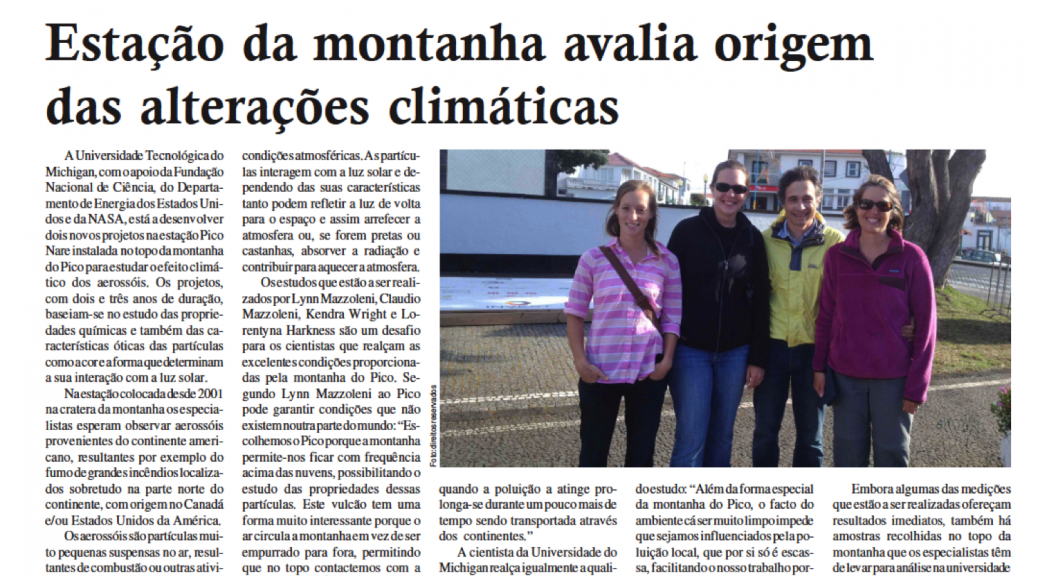Kendra Wright, Lorentyna Harkness, Claudio Mazzoleni and Lynn Mazzoleni were interviewed by David Borges, a local newspaper reporter in Madalena, in July 2013. Here’s the newspaper story that resulted from our talk.
Published on August 16, 2013 (Versão em Português Disponível)
This story was translated using Google Translate.
Mountain Station Assesses Climate Change
Written by David Borges
The Michigan Technological University, with support from the National Science Foundation, the Department of Energy of the United States and NASA, is developing two new projects in the Pico Nare station installed at the top of Pico Mountain to study the climatic effect of aerosols. The projects, with two and three years in duration, based on the study of chemical properties and also the optical characteristics of the particles as color and shape that determine their interaction with sunlight.
Placed at the station since 2001 in the crater of the mountain experts expect to observe aerosols from the Americas, resulting eg smoke from large fires mainly located in the northern part of the continent, from Canada and/or the United States of America.
Aerosols are tiny particles suspended in the air, resulting from combustion or other human activities that may have a duration of 1-2 weeks, depending on their origin and atmospheric conditions. The particles interact with sunlight and depending on its characteristics can both reflect light back to the space and thus to cool the atmosphere or, if black or brown, absorb the heat radiation and contribute to the atmosphere.
Studies are being conducted by Lynn Mazzoleni, Claudio Mazzoleni, Kendra Wright and Lorentyna Harkness is a challenge for scientists highlight the excellent conditions provided by Mountain Peak. According to Lynn Mazzoleni Pico can ensure that conditions do not exist elsewhere in the world: “We chose Pico because the mountain allows us to stay with frequency above the clouds, allowing the study of the properties of these particles. This volcano has a very interesting because the mountain air flows instead of being pushed out, allowing the top to contact you free troposphere. It’s like a connection that is in the atmosphere and allows everything is well mixed and when pollution reaches extends over a little more time being transported across continents.”
The scientists also highlight the environmental quality of the archipelago, stressing that this is a key factor in the outcome of the study: “In addition to the special shape of Pico Mountain, the fact that the environment here is very clean keeps us from being influenced by local pollution, which itself is rare, facilitating our work because the instruments are very sensitive and it is important that they are not influenced by local pollution.”
Although some of the measurements being made offer immediate results, there are also samples collected at the top of the mountain that the experts have to take for analysis at the university and then collected and processed data can draw conclusions.
